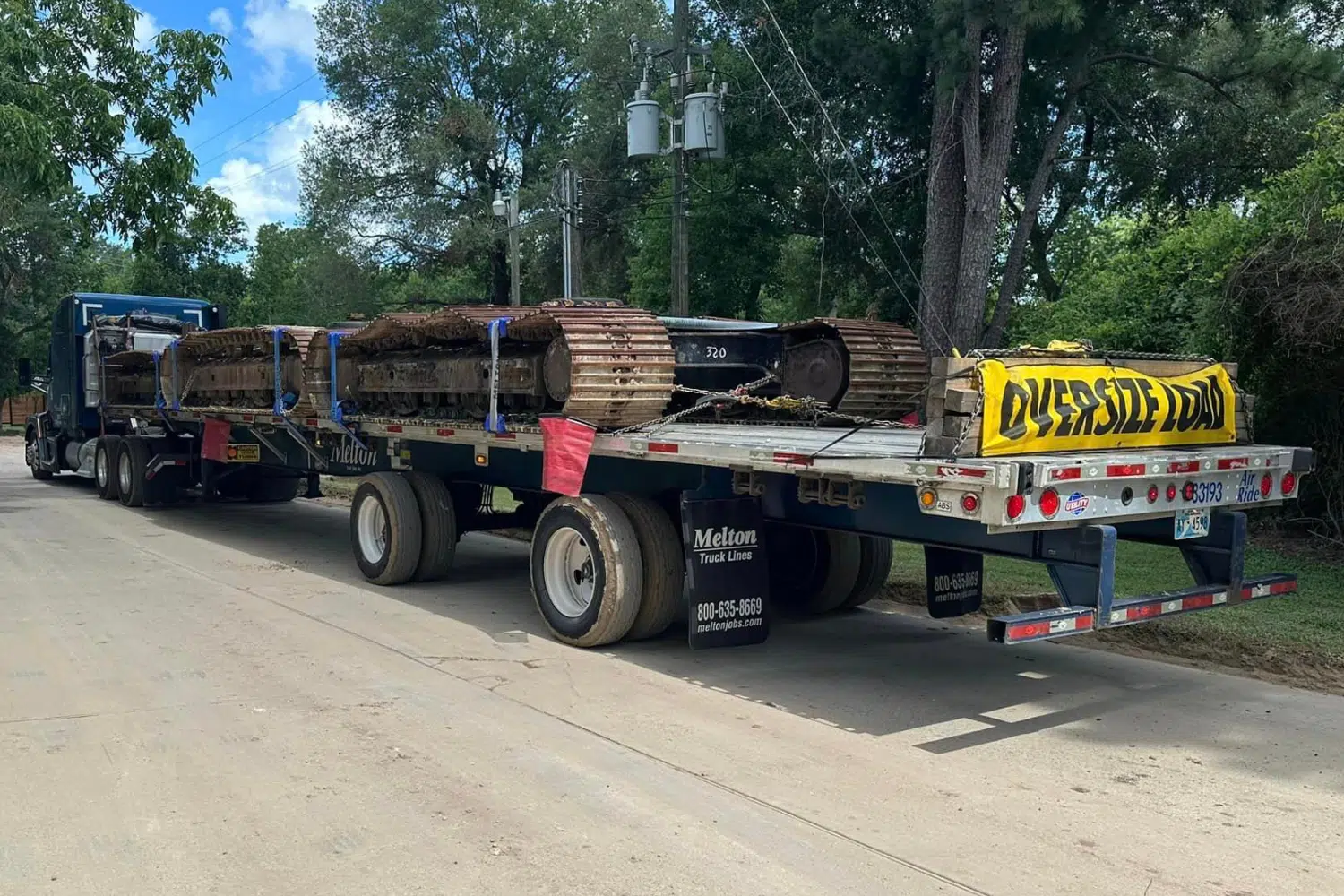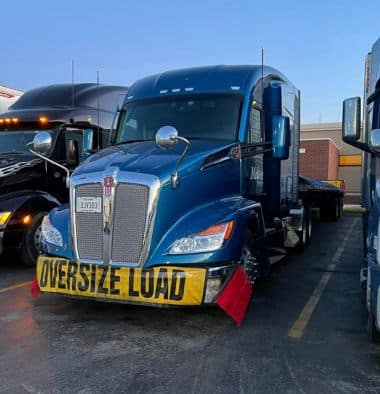
Over Dimensional Loads: What Shippers Need to Know
If you work in industries like construction, automobile manufacturing, energy, or anything else involving large machinery or parts, arranging OD (over-dimensional) loads to get from point A to B is likely a very important part of your business. However, understanding the entire process can be a daunting task. There are so many permits and regulations out there that it can become overwhelming, but taking the time to understand the ins and outs of this process can make all the difference. In this blog, we’re keeping it simple so shippers can understand what they need to know about OD shipping.
What are Over-Dimensional Loads?
Over-dimensional loads, which are normally abbreviated to OD or referred to as over-sized or overweight, are loads that don’t fit the customary sizing of typical trailers. Typically, a load is considered over-dimensional when it surpasses 8.5 feet in width, 13.5 feet in height, is longer than 53 feet in length, and/or exceeds 80,000 pounds. Specifics can vary from state to state, but if considered OD, these loads will require special handling and permits due to their size.
What Are the Difficulties That Come With Shipping Over-Dimensional Commodities?
Navigating regular shipping can already be tricky depending on the load, but when it comes to OD loads, there are several unique challenges you might encounter.
Route Planning: Travelling via standard highways is usually the go-to route for many shippers, but with over-dimensional loads, it may require additional steps. Certain roads, bridges, and tunnels may not be able to accommodate over dimensional loads, so it will take a careful planning process to ensure that the route is the most viable.
Extended Transit Time: Depending on the restrictions and detours required in the route planning process, it’s important for shippers to realize that these loads can take longer to get from A to B than a standard-sized load.
Permitting and Travel Restrictions: An important factor to consider if your load travels over state lines is that many states have additional restrictions or permit requirements based on the destination. In some areas you may find travel times restricted to certain days or times, some states may require additional permits depending on the load.
Increased Costs: Oversized loads will cost more than standard-sized shipments, especially when factoring in the cost of special permits and fees, increased equipment and labor, and the overall longer transit time.

What Permits Do I Need for OD Loads?
Permits are documents that can be issued on a town, county, state, or federal level for loads that exceed legal limits enacted in that area. Some requirements you may encounter in the process are:
Over-Dimensional or Oversized Permits: For each state your load needs to travel through, you’ll need to secure a permit to legally haul it. Depending on the time of year and the state, this could also come with restrictions on when the truck is allowed to run.
Escort or Pilot Vehicles: For some loads that are exceptionally large or being transported through a city, you or your transportation provider will be required to arrange escort/pilot cars to accompany your load to its destination. This can drastically impact the shipping cost of your load – while the real cost varies by travel time, weather conditions, states travelled, and more, a safe estimate is an additional $2/mile.
Route-Specific Permits: If your freight has to navigate a specific route, you may need a permit to legally travel it. This can be for routes in cities or especially narrow roads – be sure to check permit requirements at the town/county level if you’re planning on leaving the interstate. This will usually include your freight’s origin and destination towns.
Here are some steps to make sure you’ve got the right things in order before setting off:
Plan Your Route Thoroughly: As previously mentioned, some states will have flat permit requirements and fees, while others may require you to obtain additional permits based on the county or city you are traveling through. Some carriers will help plan routes based on their knowledge of OD shipments, but some may not. It’s best to stay informed about where and when your load can travel.
Plan for Changing Requirements: While some areas may allow carriers to travel with banners and flags on their loads, others will require pilot or escort vehicles to travel ahead of and behind the load. Since requirements can change as soon as you cross state lines, stay updated on your freight’s location and be ready to adapt to new requirements.

Start the Process Early: For those who are new to OD shipping, it may take time to set up an account with the county or state, thus making it a longer process to obtain proper permits and reserve escort cars during required times. Check with your carrier partner in advance if they have pre-existing relationships that make obtaining these permits quicker.
What Are the Consequences if an OD Load is Not Handled Correctly?
Over-dimensional freight does carry more risk than a standard-sized load, so trying to transport loads without the proper documentation can come with some hefty consequences.
Fines and Penalties: Non-compliance with permit requirements can lead to hefty fines from state authorities and the DOT.
Increased Liability: If an OD load causes an accident or property damage, the shipper may face significant liability.
Impacted Company and Driver Safety Scores: Drivers that are pulled over by law enforcement or DOT inspectors without proper documentation for their loads can be hit with an out of service order, which impacts CSA score across the board.
Shipping over-dimensional loads can be complex, but with the right knowledge and support, it doesn’t have to be overwhelming. The best way to eliminate this stress is by partnering with an experienced company like Melton. Our Specialized Shipping team is extremely well-versed in handling over-dimensional freight, and will help arrange the proper permits so your OD freight is delivered without a hitch. Learn more about how Melton can fulfill your shipping needs on our over-dimensional shipping page.
